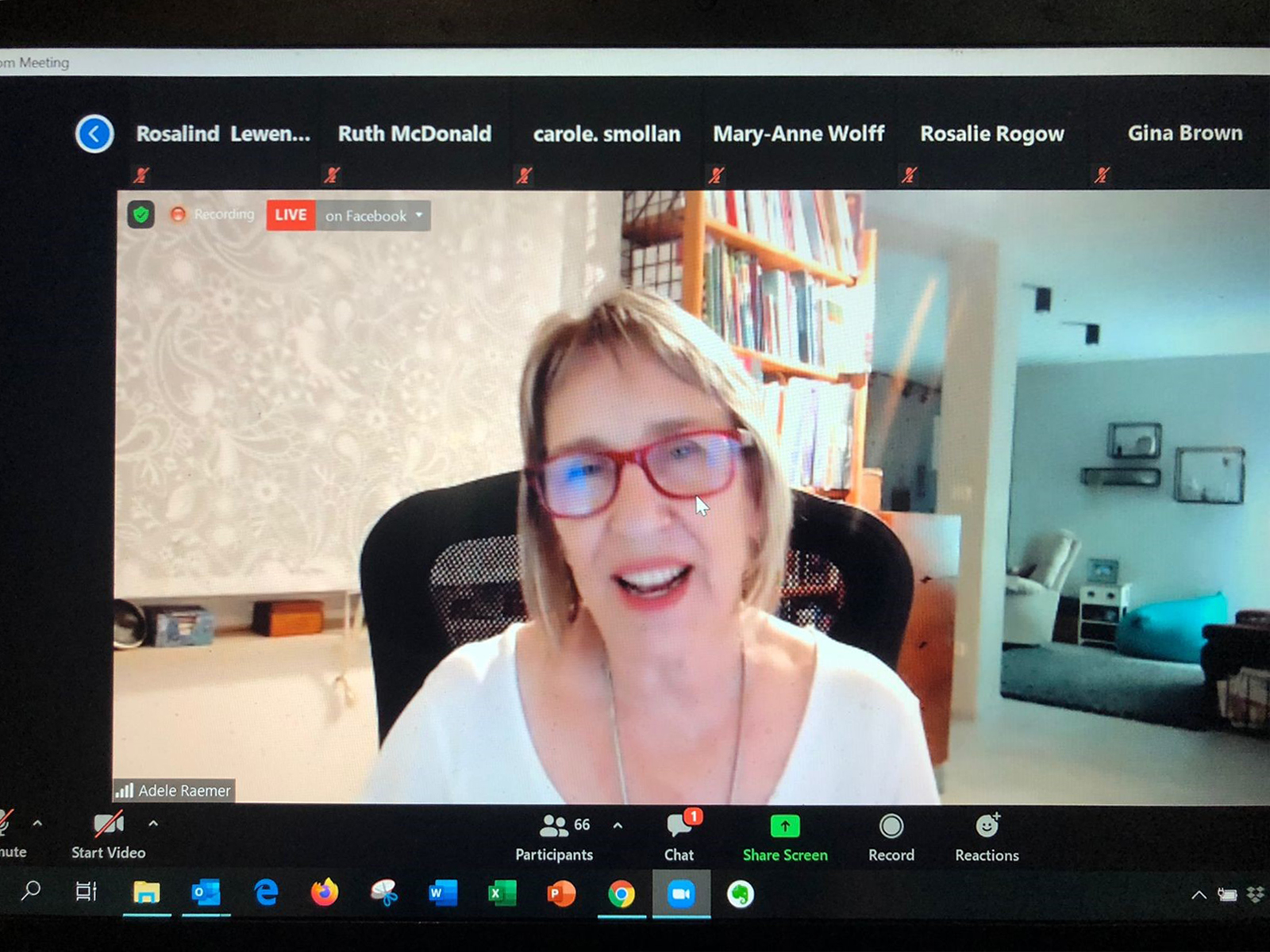
Israel

“I’ll take my chances,” says resident on Hamas’s firing line
“Living on the Gaza border is 95% heaven, and 5% hell,” said Adele Raemer. She’s made it her mission to tell the world what life is really like in the shadow of Hamas rocket and mortar attacks on Israel. When the weapons went silent in “Operation Guardian of the Walls” on 21 May after 11 days, Raemer was at her laptop, documenting her experiences and feelings. This fiery, courageous teacher and part-time hospital clown has become “an unwitting war correspondent”. She even addressed the United Nations Security Council in 2019.
Raemer was speaking on a webinar hosted by the Gilah Branch of Bnoth Zion WIZO Western Cape on Monday night.
She has lived on Kibbutz Nirim in the Negev, about 2km from the Gaza border, since she made aliyah from the United States in 1975. She showed pictures of the “heaven” – wild poppies bursting into bloom and tranquil green fields growing in the desert. Raemer reminisced about when it was possible to go the beach or the suq (marketplace) in Gaza.
Israel withdrew unilaterally from Gaza in 2005. When Hamas took over the territory, it began to fire rockets at southern Israel. Soon Iran replenished these with deadlier, longer-range missiles.
In the 2008 to 2009 “Operation Cast Lead”, they had no safe rooms on her kibbutz, and no Iron Dome missile defence shield. The Israeli government spent billions of dollars on reinforced concrete safe rooms within a 7km radius of the border over the next year.
“Being so close to the border,” she said, “I have about 10 seconds to get into my safe room when there is a red alert (tzeva adom).” When rockets rain on the area, life becomes unbearable and people in their path can suffer severe trauma, especially children and senior citizens. And the retaliatory strikes by Israel in Gaza also cause much pain and anguish.
Raemer started a Facebook group in 2011 to document her experiences, which now has more than 6 500 members. It was her way of telling the world what was really happening. It also helped her process her feelings. Raemer is on “the prime minister’s list” of people who can be interviewed by local and foreign media during attacks. She started blogging on CNN’s iReport and then for the Times of Israel.
Back in 2014, “Operation Protective Edge” lasted 50 days. Raemer was on her kibbutz, documenting the hostilities every day. She also began tweeting the conflict. “Israelis aren’t on Twitter so much, but Gazans are,” she said.
A tractor on the kibbutz accidently uncovered a subterranean tunnel hidden under the fields. Raemer showed a picture of her inside it. “These terror tunnels aren’t for transporting food or medicine,” she said. “They have one purpose only – to attack and kidnap Israeli soldiers and civilians. This tunnel was three stories underground, wired for electricity and communications. We have no idea what other tunnels may be under our fields or our homes.”
In the 2014 escalation, a mortar exploded just 3m from her bedroom window. She smelled smoke and gunpowder. If she wasn’t in her safe room, she would have died from shrapnel wounds. On the last day of that war, two kibbutznikim lost their lives to rockets, and another lost both his legs. He’s now the mayor of the area.
In April 2018, Gazans began sending kites and balloons attached to smouldering coals over the border to burn Israeli fields and properties. Raemer developed an online map showing where they fell. The entire region is blanketed with fire sites. That year, Palestinians also massed at the border, sending acrid smoke across the fence from violent protests.
Raemer has been in contact with many people “on the other side”. They have organised joint bike rides, but a plan to develop a cross-border choir singing in Arabic, English, and Hebrew has been shut down by Hamas. Most ordinary people, she says, just want to live in peace and have a hopeful future for their children.
Raemer supplied some stark facts about the just-completed “Operation Guardian of the Walls”. A total of 4 360 rockets and mortars were fired into Israel from Gaza, 1 661 of which were downed by the Iron Dome (which doesn’t fire if rockets are aimed at the sea or sparsely populated land). About 176 missiles fell in populated areas, showing the Iron Dome to be about 90% effective. About 680 rockets from Gaza misfired, killing 20 Gazans. More than 200 died in Gaza and 12 in Israel.
When asked why she hasn’t moved away, Raemer replied, “This is my home. Where am I going to move? There are attacks on Be’er Sheva, Jerusalem, Tel Aviv, and knife attacks and car ramming. There is nowhere that you can promise is terror free. So I’ll take my chances.”
Nevertheless, Raemer retains hope that this endless cycle of violence will end. “I’m old enough to have known a reality that was different. There is no reason not to get to this again,” she said. “But there has been no real Gaza strategy from the government since 2006. These wars are started and ended by Hamas, on its terms. At present, desperate Gazans have nothing to lose … And if we are attacked, we have every right to fire back.”










